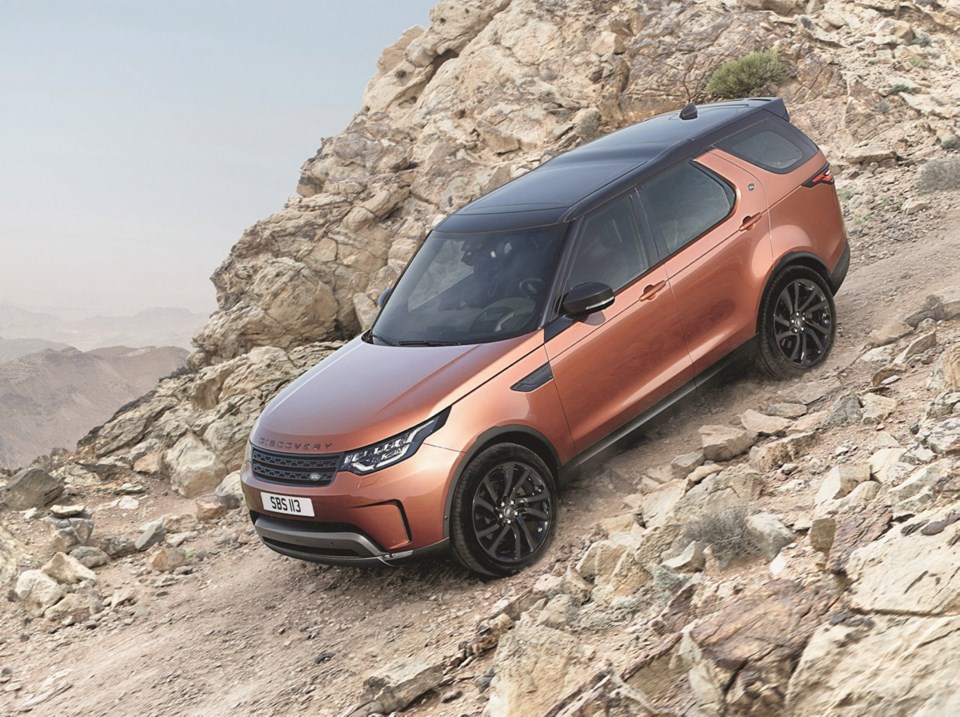For people who prefer bigger sport utility vehicles with power to spare, the Land Rover Discovery is a rock-solid choice. That’s especially true if abundant luxury content is also on the shopping list.
The first Discovery model was phased out after 2004, but the nameplate was attached to the Discovery Sport that arrived for 2015, followed by the larger Discovery two years later, which replaced the LR4.
From any vantage, comparisons between the Discovery and the Discovery Sport are startling. Both have similar curvy sheetmetal and forward-slanting rear roof pillars. The Discovery is more than 35 centimetres longer and has 18 additional centimetres between the front and rear wheels. Both models are the same width.
Due to the ride height, getting in and out requires long legs (there are no standard running boards to aid entry and exit). Once aboard, the touchscreen that controls most functions is far from intuitive and perhaps even overly complicated.
The Disco’s three rows of seats provide room for six more people to tag along when heading into the wilderness or, more likely, to the ball game or outlet stores.
All are guaranteed first-class accommodations, including stadium-style seating that gives an elevated view of the landscape. The second-row bench can be split into two separate bucket seats with the mid-position folded, or it can be configured as a two-person bench with the passenger-side outer section folded.
The power-folding option allows you to lower the rear rows from the touchscreen, a panel in the cargo hold, or with the available smartphone app.
Another Discovery trick is the optional dropdown inner tailgate that’s useful as a table or bench.
The Discovery’s mostly aluminum unitized structure integrates the body panels, floor, firewall and roof, replacing the LR4’s hefty body-on-frame construction. The result is a weight reduction of about 455 kilograms (to about 2,160), despite being slightly larger overall.
The base supercharged 3.0-litre V-6 makes 340 horsepower and 332 pound-feet of torque. Optional is a 3.0-litre V-6 turbodiesel rated at 254 horsepower and 443 pound-feet. An eight-speed automatic transmission is standard for both.
Even with the reduced vehicle weight, the supercharged V-6 is estimated at a thirsty 14.2 litres per 100 kilometres in the city and 9.3 on the highway. The turbodiesel is rated at 10.5/6.5 on the highway, but according to Land Rover, that model is a second slower to 100 km/h than the gasoline engine (8.1 versus 7.1).
Although the supercharged V-6 feels peppy, the Discovery test vehicle felt tippy and moved around in its lane at highway speeds. There was also a slight — and unnerving at times — delay in power when the accelerator was pressed.
The supercharged V-6 seems like the best choice over the diesel, especially with a greater towing capacity (3,730 kilograms versus 3,500).
The base SE and HSE models use a single-speed four-wheel-drive system that splits the torque 42:58 front to rear when traction is good, but varies that bias if tire slip is detected at either axle. A two-speed transfer case with a low range is standard in the HSE Luxury and optional in the SE and HSE. It includes a centre-locking differential for tackling steep grades.
The HSE Luxury also has an electronic air suspension that automatically levels the Discovery, depending on load and terrain conditions, and lowers the ride height by about four centimetres when parked.
SE pricing begins at $66,000 including destination charges, which gets you a reasonably equipped wagon with leather seats, fixed-panorama roof and dual-zone climate control. Active-safety content such as emergency braking is optional. The HSE and HSE Luxury content lets you travel in more regal style.
The Discovery definitely has some quirks, but you’ll be acquiring one of the most competent, comfortable, sophisticated and stylish sport utes around, one with a pedigree to match.


